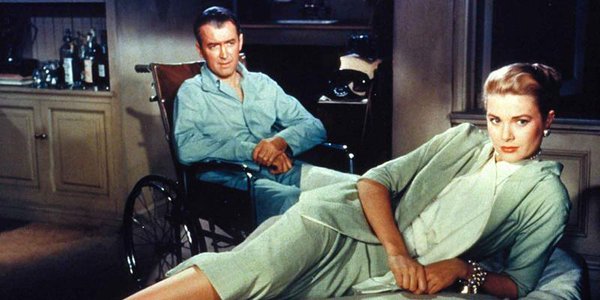Film Writing: Essays vs Reviews

Sam is 25 years old from the West Midlands region…
In any sector where publishing one’s writing, there are various types into which one can subvert their writing style. The four most basic are expository, narrative, descriptive and persuasive. When it comes to writing for film and media, though, all four of these sorts can be used. For example, both descriptive and persuasive writing could be used in a review or essay in which the reader’s objective is to convince their audience based on what has been written.
Although film essays and film reviews take the form of a number of writing styles, there are often misconceptions between the two. Reviews often generally talk to the entire audience who have not seen a film and write in the first-person, whereas the film essay targets an academic audience and has a more specific process with a set of rules.
Having briefly outlined the difference between film essays and film reviews, this article will now elaborate on each writing style by answering the following questions – Why do they differ? What are their approaches? How long should they be? Who are the target readers? What is to be included in the main body? What style of language should be used? How do they use exterior sources? What are the results and how should they conclude?
Film Essays
How do essays work?
Although it can often depend on the subject area, writing essays is a fundamental task for any forthcoming assignments during college and higher education studies. It is represented as an assessment tool that exemplifies not only your academic writing skills, but further evaluation on critical thinking within your subject. The essay follows a simple structure – a beginning, middle and end, but how they are delivered is entirely down to the writer and the reader’s critical interpretation.
The essay is required to go into more depth about a certain topic, but how it is written is specific. Regarding film and media, the essay needs to critically analyse relevant elements from a film (or group of them), which serve as examples when arguing the essay’s question. These examples could be chosen based on one’s own ideas, which are simply formulated into an argument. For instance, one might want to write an essay about Quentin Tarantino and his repeated use of violence. The response to writing it would simply be to use scene examples and analyse them to structure that argument.
How could film academics approach essays?
It is firstly important to point out that when writing essays, there is no right or wrong answer. In the medium of film, especially, because we go into the films with different expectations and have various opinions. However, there is a right and wrong answer as to how the academic takes their approach to their work. Unlike reviews, you cannot write about how you feel and what you think in an essay.

Considering this, there are questions that the writer needs to ask themselves when approaching essays – what evidence am I showing? Why is the content relevant? How am I going to support these claims from ideas I’ve gathered? The writer originates their ideas from indications in films, but the execution of the written analysis must be at an academic style. Also, the ideas are usually meant to be timely in connection to why the idea is important now, which is what the second question indicated. You are voicing your interpretation of an idea, but the paper contents are practically like a report and critique of your observations.
For example, one may write an analysis about differences between dreams and reality in Christopher Nolan’s Inception. One would not illustrate their own opinion in an essay, but would look at relevant aspects to further examine the point. These may include analysis of mise-en-scéne, props, figural expressions from characters and how the camera shots are created. Using evidence from the film, and analysing it, the academic writer can then justify their arguments.
How long should the essay be?
Film essays require not only analysis of relevant scenes relating to the essay question or hypothesis, they are also dependent on research and literature relating to the topic. In this sense, the writer needs the required space to fit in both the literature, whether using quotes or paraphrased sentences, and one’s own analysis. This can often be difficult due to a word limit (which can vary from 1000 words or more), but the key to a good film essay is that it is only establishes the most important points, using both the literature and scenes or characters used for analysis.
Who are the essay’s target readers?
The essay is aimed at an academic reader. In particular regards to the academic, the key individuals could either be lecturers within the industry or individuals working in a research faculty. The film essay could also be a useful resource for people, such as students, who are either required to write about a related subject or will use the essay’s research in their work towards an independent project (such as a Master’s or PhD thesis). Of course, anyone can choose to read the essays but their target readers are primarily academics or learning ones.
What is to be included in the essay’s main body?
The idea of a main body in an essay format is for each paragraph to serve as a mini-answer to the question, but not one which finalises it. Each section must be a valid explanation from analysis that contributes to your final answer, which comes in the conclusion. This could either be factual information (which could surprise the reader) or a justifiable example. The purpose of the paragraph must be necessary, too, in order to help support the argument claim.

For example, an essay question may ask – “to what extent does Alfred Hitchc*ck display the auteur theory and male gaze in his films?” In this one, both of these theories must be researched, applied to Hitchc*ck, then textually analysis must be done of the relevant films. Those concerning the male gaze being films such as Rear Window and Vertigo, while sequences from North by Northwest, Psycho and The Birds may be more applicable to the auteur theory. Scenes analysed, therefore, support the essay claim based on the title and justify the arguments. This strategy is to be repeated in the main body before drawing up your summarised conclusion.
What style of language should be used in the essay?
When writing essays in general, there are boundaries concerning style of written language. Although the reader knows that the author is writing in their own voice from their own idea, they are not speaking the voice of opinion. The reader must be on an equal level to the writer. So, how does the essay formulate its written style without it being too opinionated?
The fact that they target academics already suggests a specific tool must be used. In addition to writing expressively in an analytical style, we must use referencing. It is a clear mention to an academic’s former research and a side note to how your work applies, which clearly differs from reviews. From that argument elaborated from somebody else’s work, you then create your own ideas and assumptions. However, first-person terms such as “I think…”, “my” or generally “I” should be avoided. Follow this guideline from Cite This For Me for help with referencing.
Instead of speaking in first-person, the idea at academic level is to use a sentence structure such as – “According to Laura Mulvey, the male gaze is defined as…” before continuing with a direct or paraphrased quote. An in-text reference is to be included, too, for two reasons – to clarify the quoted source and to avoid plagiarism.
How should we use exterior sources for the essay?
When writing at academic level, there are still rules to follow concerning how authors use other academic sources. Now, whether it is at essay level or mere film review standards, editors and academics still expect to see certain regulations. An essay is heavily reliant on researched literature to support one’s own claims.
Laura Mulvey is a renowned example of a film theorist whose work on the male gaze shaped film and media studies, namely through her essay titled here.

Some of these literature sources can be implemented in an essay and can serve to underpin and support one’s own claims. For instance, some may want to write about Immanuel Kant’s philosophy on morality in relation to a drama film or Charles Darwin/Francis Galton’s theory of evolution and eugenics when discussing early science-fiction cinema. The writer is not to copy the academic’s work, but to instead utilise it in arguing their own original ideas.
What are the results and how should you conclude your essay?
It is particularly important to ensure that your results are the answers to your essay title, whether it is a question or not. The answers are all divided into several sections within the main body, but the summarised response comes at the very end in the conclusion. For example, an essay arguing about 3D cinema being the future or a financial gimmick should be concluded with a finalised summary of your findings. At the same time, there should still be room available either for readers to reflect on or for academics to elaborate further on the research.
Film Reviews
How do reviews work?
As opposed to essays, film reviews are heavily reliant on critical reception. They are written reports about a film and are from the viewpoint of the writer. The majority of reviews are published around the time of the film’s release, sometimes just before the premiere or during its theatrical run in the cinemas.
The film review critiques a film based on its featured elements, which could be acting, production aspects (such as lighting, cinematography or visual effects), narrative structure, screenwriting or directing. Its purpose is to weigh the ups and downs but, like an essay, to draw a conclusion as to whether the film is considered good, average or bad. To make it more interesting and engaging for the readers, reviews often appear in the form of star ratings with 1 being the lowest and 5 being the highest.
To learn more about critiquing the different elements of film, read this article on film analysis.
How could writers approach reviews?
The review is mainly from a biased, one-sided viewpoint and the idea is that relevant points discussed are meant to persuade the readers. It is not strictly forceful that people must go and see a film or not, but the implication is that expectations may change whether for good or bad. The reviewer’s words are intended to be reliable to other people who have yet to see the film, despite us knowing that all opinions differ. The question remains – if all our opinions differ, why do readers engage with another’s writing? It could be out of curiosity on whether a film they’ve wanted to see is good, or perhaps they hope the film will be bad.
Similar to an essay, it is crucial for the writer to know enough details about the film before writing the review. Apart from that, for reviews, writers gather the specifics from their own thoughts whereas academics base their writing more on factual information. It is fairer to the film for the writer to eventually draw up a reasonable decision about the film after watching it.

What about while actually watching a film? Some writers collect their thoughts afterwards when writing the review, but others may work easier by taking quick notes during the screening. This is entirely down to preference and memory skills, but both do prove to be viable strategies when approaching reviews throughout the film viewing. Taking notes may actually be useful, though, because key elements can easily be missed during a first-time viewing. Watching the film for a second time may be an option if note-taking is not the writer’s approach.
How long should reviews be?
A review is usually expected to be approximately 700-1000 words. It is written at this length because each of the aspects discussed within the review (acting, production, narrative, directing) are more concise, particularly as the points are made clearer for the reader. Also, as reviews are a personal account, it may seem boring to read page after page of a review when the reader’s opinion may differ. The length could distract from the reader’s enjoyment, particularly as it is from only the writer’s opinion. So, whether the writer enjoyed the film or not, keeping the written piece brief and straight to the point is the key to an exceptional film review.
Who are the review’s target readers?
As opposed to the essay, the review’s target audience is everybody. The entire purpose of the review is for its content to be persuasive and reliable enough for an audience to base its decision on. Readers can see published reviews in one of two ways – either in print or online (usually as part of a magazine or one’s personal blog). Both of these are popular mediums of publishing film reviews and as they are easily reachable to people now, the general public can access any of these sources and read reviews from there.
What is to be included in the review’s main body?
Similar to an essay, a review’s main body should include paragraphs featuring mini-responses to the eventual conclusion. A review needs to look for and discuss the following aspects – actors, structure, music, mise-en-scéne and possible connections with the audience (especially if any moral messages are included or the film raised controversy). Each of these characteristics could be summarised in a single paragraph, but as long as it meets a reasonable length and has concise language.
It may also be vital to highlight that the biggest fault of many reviews, especially these days, is their overwhelming use of spoilers. Anything like that should not be in the review at all. From a plot point to a character twist, it unfairly ruins the expectations and often excitement for the reader, but also the regard of the writer. It defeats the purpose, so no spoilers are to be included. Only include information that the reader already knows or should be thinking about during the expectation phase. However, spoilers can be included in the essay as their readers are expected to know all about the film as it centres more on analysis.

Reviewers instead analyse their points about a film and formulate their opinion through a valid argument. Furthermore, the review is a written discussion about a film and should not be written simply as first-person sentences. For example, comments like “The Dark Knight Rises was a good film but could have been better”, “I liked The Hangover because it was funny” and “I didn’t like The Exorcist because it was scary” are not enough. Why could The Dark Knight Rises have been better? Why was The Hangover funny? Why was The Exorcist too scary? These points need valid justification. They don’t have to be proof of anything, but could be aspects which may elicit further argument.
What style of language should be used in the review?
To elaborate from the previous point, the written language of a film review should be subject to the writer speaking in their own voice and creating their own interpretation. Reviews are written from a personal point-of-view but in a written form of expression. The writing aims to sell the opinion to persuade the reader but, depending on the publishing site, the reviewer can use first-person terms. Particularly if it is a personal blog that centres only on the opinions and thoughts of that writer, using first-person vocabulary such as “I” and “my” can be used.
However, if the review is going to be among the work of other reviewers as part of a specific business, whether online or print, then first-person can be dismissed. It is meant to be written as personal regardless, but, particularly if for a magazine, the idea is to pen the review professionally within a balanced structure.
How should we use exterior sources for the review?
Using literature as a supportive tool is not so relevant in writing film reviews because, as repeatedly stated, they are more centred on publishing from a personal perspective. They do not need to back up one’s idea or claim as a review is subject to individual opinion. The review does require valid reasoning in its claims, but only the academic essay uses resources to support theirs.
What are the results and how should you conclude your review?
Again like the essay, the results of the review are the findings you have gathered from the main body of your writing. The reviewer condenses their thoughts by drawing up a fair summary of whether a film should be seen or not. It should always conclude with a sense of excitement for the reader or, if a film is disappointing, a sense of dignity.
However, there are rules to consider when writing the conclusion of a review. The most fundamental problem of review conclusions is when the writer addresses the film with a personal attack. Opinions differ, of course, and it is understandable that a writer would want to express theirs but boundaries are crucial. A misstep like this could lead to controversial consequences, reflecting badly on the writer’s career. The review should conclude with the reader regenerating their own expectations based on what they have read. Therefore, the reviewer should be as expressive in writing the review as they should be equally generous to the reader.
Conclusion
So, which of these two film writing formats is easier to use – an essay or a review? It is a simple question that is difficult to answer as it is usually dependent on the writer’s preference. Although reviews are considered easier, as one can begin their writing by voicing their opinion, it is still a style that shouldn’t be compared to writing an essay. There is a similar process to doing them each properly, but the approach and eventual presentations of each are different from one another.
To put it simply, reviews are a journalistic style of writing for a general audience, whereas essays are more academic for scholars and researchers in higher education faculties. I have not declared which is the most useful or most creative format to use in relation to cinema, but instead raised the compare-and-contrasting points between writing film essays and film reviews. Therefore, clarifying for readers that despite being commonly misinterpreted as similar, they are different and there are different writing tools to use.
What is your preferred style of film writing? Did you find this guide useful?
Does content like this matter to you?
Become a Member and support film journalism. Unlock access to all of Film Inquiry`s great articles. Join a community of like-minded readers who are passionate about cinema - get access to our private members Network, give back to independent filmmakers, and more.
Sam is 25 years old from the West Midlands region of the UK, who has a passion for the world of cinema and publishing. He is currently studying a postgraduate degree in Film & Television: Research and Production at the University of Birmingham. He is currently working in theatre and academic support.













